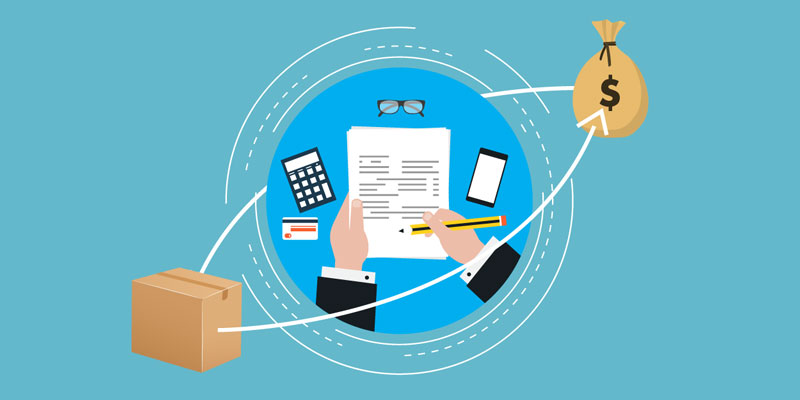It is common for lenders to give subprime mortgages to people who have less than stellar credit histories. Because the lender believes the borrower has a higher chance of defaulting, the lender does not issue a conventional premium mortgage. Subprime mortgage interest rates are generally substantially greater than premier mortgage interest rates since lenders are taking on greater risk. These are mostly ARMs, which means that the interest rate may rise at predetermined intervals in the future.
A Subprime Mortgage Definition & Example
Subprime mortgages have significant interest charges and are often offered to people with credit ratings less than 620. Loans like this one allow people with bad credit to purchase houses, but there are significant dangers. These mortgages often have a low beginning interest rate since they are adjustable-rate mortgages (ARMs). In the beginning, the lower interest rate might make the payments more affordable, but it expires after a certain amount of time. Interest rates will change after the original rate expires, depending on market circumstances. The borrower may experience payment shock as a consequence, which might lead to payment defaults or perhaps even foreclosure.
The Working of a Subprime Mortgage

The interest rate granted to a borrower depending on his or her credit record is referred to as "prime" and sometimes "subprime." Borrowers with great credit are eligible for the lowest-rate mortgage, known as a "prime." If you're subprime, you'll be eligible for loans with greater interest prices and fewer favorable conditions because of your bad credit history. If a borrower falls into one of the following categories, they may be termed subprime:
- A Credit score of less than 620.
- Delinquent payments in your credit history.
- In the recent five years, you've made at least one bankruptcy filing.
- An excessive debt-to-income ratio.
- You've had your home repossessed or have been in the midst of bankruptcy.
Kinds of Subprime Mortgages
Listed below are a few of the most popular varieties of subprime loans.
Interest-Only Mortgage
For a certain amount of time, you will only be required to pay interest charges on an interest-only mortgage. While your payments may initially be minimal, they may climb significantly when the first time is finished. Many individuals get interest-only loans with the intention of refinancing before their payments rise. You may be unable to refinance if the value of your home drops or if your financial condition deteriorates.
Adjustable-Rate Mortgage (ARM)
An ARM, in contrast to a fixed-rate mortgage, has interest rates that fluctuate throughout the course of the loan. A modest initial rate will be applied to your account before interest rates change based on market circumstances. First, be sure you can handle the increased interest rate on your mortgage before registering for an adjustable-rate mortgage (ARM). The interest rate ceiling can help you evaluate if you can manage greater monthly payments on your mortgage.
Balloon Payments
A balloon payment is a big, one-time payment due at the conclusion of your mortgage term. Until the balloon payment, your installments may be smaller, but the ultimate payment might be in the hundreds or thousands of dollars. Before you commit to this kind of loan, you should first determine whether or not you will be able to pay the balloon payment when it becomes due. Refinancing first might leave you in a terrible financial position, so be cautious.
Exceptional Occurrences
Subprime mortgage failures were substantially to blame for the financial crisis of 2008. It's possible that subprime consumers may get loans with no earnings or down payment requirements at all. Some lenders counted on the reported income of the borrower, which meant that the borrower might claim to make six figures but didn't have to give any proof. So many people were approved for loans they couldn't afford as a result. These borrowers caught themselves in over their heads when the property market collapsed. When the property was valued less than the mortgage, they could not afford the increased interest rates on their mortgage payments.
The Pros and Cons

Getting a mortgage when you don't ordinarily fit for one is among the main advantages of subprime mortgages. You shouldn't take out a subprime loan simply because you are eligible for one. Benefits aside, there are a number of dangers that need to be considered:
Higher rates:
People who apply for subprime mortgages often have low credit ratings and financial difficulties. For this reason, a lender would be wise to avoid this sort of loan altogether. Lenders demand higher loan rates to counteract this risk. Traditional 30-year fixed-rate mortgages now have an average interest rate of less than 3%. However, subprime mortgages may have an interest rate of up to 9% to 10% and demand larger down payments.
Larger down payment:
Subprime mortgages may be mitigated by demanding greater down payments, which can range from 26% to 35%, based on the kind of loan. This might be difficult if property prices are rapidly increasing and you run the danger of being pushed out of your ideal community. You must also exercise caution when it comes to investing a significant portion of your liquid assets in your property. A financial emergency necessitates having a sufficient amount of savings to cover all of your needs, such as your mortgage payment.
Higher payments:
Subprime mortgages feature higher interest rates, which implies larger monthly payments. If you don't have the money to pay back the loan, lenders will undoubtedly be aware of that. But if your financial condition changes, such as if you become unemployed or have a medical issue, those hefty premiums may be too much for you. Defaulting on a mortgage payment may severely harm your credit, and it might even lead to a foreclosure.
Longer terms:
Conventional mortgages generally have lengths of 15 to 30 years. Mortgages issued by subprime lenders might have payback terms of up to 40 or 50 years. So you may spend a significant portion of your life making a home payment. But this also implies that the total amount of interest that you will have to pay back for the whole of the loan will be much higher.











